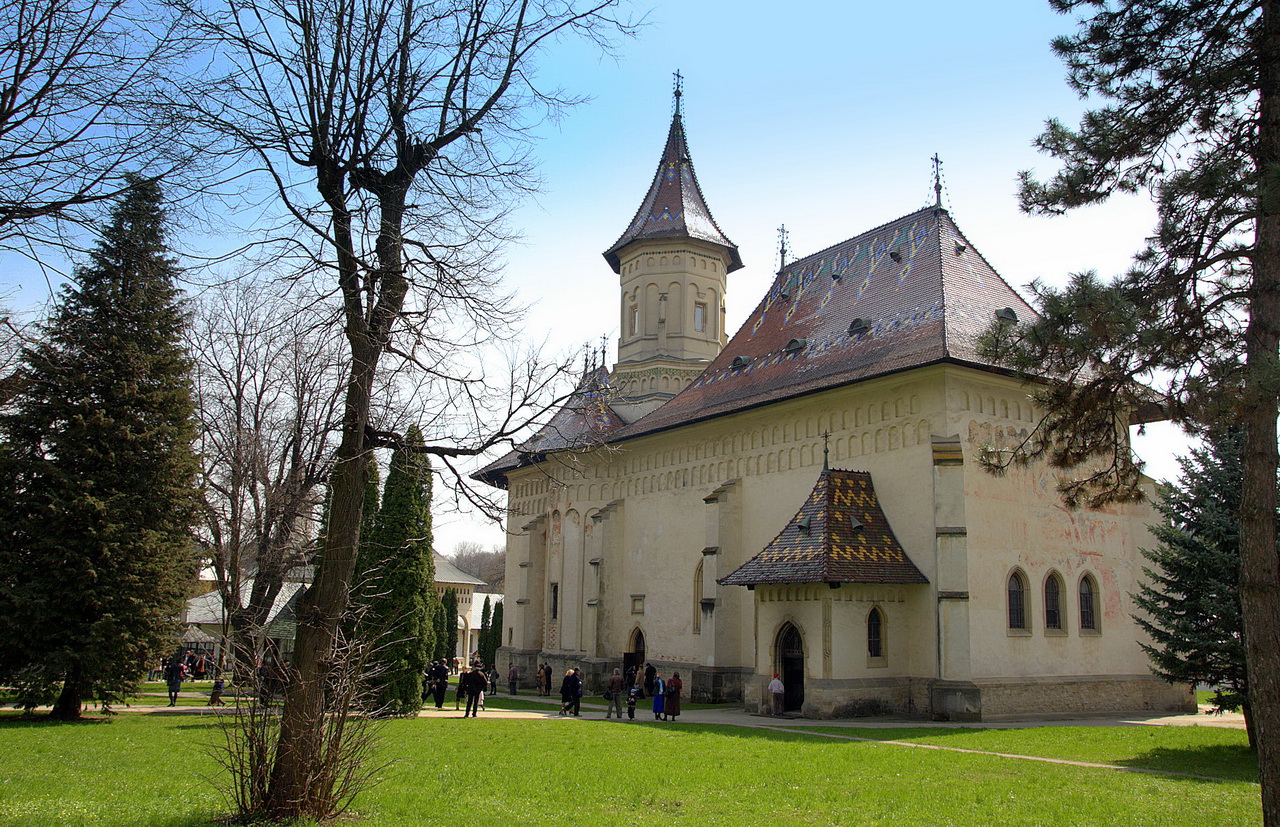9
















| Thumbs Up |
| Received: 1,961 Given: 1,438 |

Here I will post some photos with some building made by romanians.
Şcheii Braşovului (Hungarian: Bolgárszeg, German: Belgerei or more recently Obere Vorstadt; traditional Romanian name: Bulgărimea, colloquially Şchei) is the old ethnically Bulgarian and Romanian neighborhood of Braşov, a city in Transylvania, Romania. This village-like section of the town is mostly made up of small houses built along narrow roads with gardens and small fields on the sides of the mountains. Until the 17th century, the inhabitants of Şchei were forbidden from owning property inside the city walls. The people living in the Şchei could only enter the town at certain times and had to pay a toll at the Catherine's Gate for the privilege of selling their produce inside the town. Catherine's Gate was the only entrance for the Romanians — they were not allowed to use the other four entrances. It was in Şchei that Braşov's first Romanian School was established, next to the Romanian Orthodox church of St. Nicholas.















| Thumbs Up |
| Received: 1,961 Given: 1,438 |

Maramures wooden churches:
Painted monasteries from Moldova (Bukovina)















| Thumbs Up |
| Received: 1,961 Given: 1,438 |

Neo-romanian arhitecture:
Bucharest town hall:
Timisoara town hall:
Houses:
Orsova, Banat, museum

Last edited by Vlach; 04-27-2014 at 12:34 PM.














| Thumbs Up |
| Received: 3,596 Given: 409 |

I don't think so that we may use this expression in a time depth like this. Since Romania did not exist before the 19th century, so these architecture are Moldavian and Wallachian or Moldavian or Wallachian influenced (Belgerei) architecture. Nobody calls the Assyrian arcitecture Iraqi architecture or the ancient Roman architecture Spanish architecture, since these concepts did not exist then. Or the European (and Hungarian too) literature writes about Transylvanian architecture (erdélyi építészet), since Transylvania was a principalty between the 10th century and the 19th century and this, the former regional units are the denominators in the art history. And because of this it's possible the understanding of the art history.
For example the St. Nicholas Church in Belgerei is an important building of the Wallachian architecture, since this a transition between the Wallachian and the Transsylvanian architecture. Basically the building is a Wallachian church since the Romanian princes favoured the church's building and the master builders arrived from there. But the church has late renaissance details, since the church was expanded in the 17th century with late renaissance elements for example on the western facade. These elements are relatives of the Schwarze Kirche's late-renaissance details from the 17th century and it is not by accident, same masters worked on the two building at this time. But we cannot recount this story with the usage of the "Romanian" expression, since this was a Wallachian and Transsylvanian story and the "Romanian" expression would be disturbing anachronism only, since this building was a transition between two different world and not part of one world.
And this is true onto the Moldovita monastery too, since that was a Transylvanian influenced Moldovan building and good example onto the differences between the Moldovan and Wallachian architecture too. For example the specific Moldovan styled the forty-five degrees turned pendentive cupola.
This is the real Romanian architecture. And this started with the Neo-Brâncovenesc style.














| Thumbs Up |
| Received: 1,961 Given: 1,438 |

Yeah... I just wanted to say that these buildings was built by romanians (transylvanians,moldovans,vlachs)
For example in Banat, the majority of villages are with a lot of swabian architecture but was built by romanians.
For example Rasinari village (romanian village from Transylvania).


















| Thumbs Up |
| Received: 29,829 Given: 24,541 |

Seems Romania a very nice place to visit with all of it's beautiful outdoor environment and culture of the country.














| Thumbs Up |
| Received: 3,596 Given: 409 |

No, no one can deny, but the builders ethnicity maybe not relevant. The cultural regions are rather geographical, than ethnical units. Only the civilizational borders break these regions sometimes, but not necessary. For example the Danube valley cultural region from Austria to Transsylvania, from Moravia to Slavonia is almost identical culturally, but ethnically not. Czech, Germans, Hungarians, Slovakians, Croatians lived here and although this is the part of the western culture, but the local Serbian, Romanian and Rusyn peoples are assimilated to- or mostly culturally identifies with here with the western culture.
But yes, Wallachia is clearly part of the Byzanto-Ottoman Balkanic cultural region and not the Wallachians (since the historical transition zone between Wallachia and the Western world was the Transsylvanian Romanian community), but the Moldovans had significant Eastern European influence.














| Thumbs Up |
| Received: 1,961 Given: 1,438 |

Some medieval buildings from Transylvania.
Colt Church
Colt Fortress
Densus church
Ostov church

There are currently 1 users browsing this thread. (0 members and 1 guests)
 România
România
Bookmarks